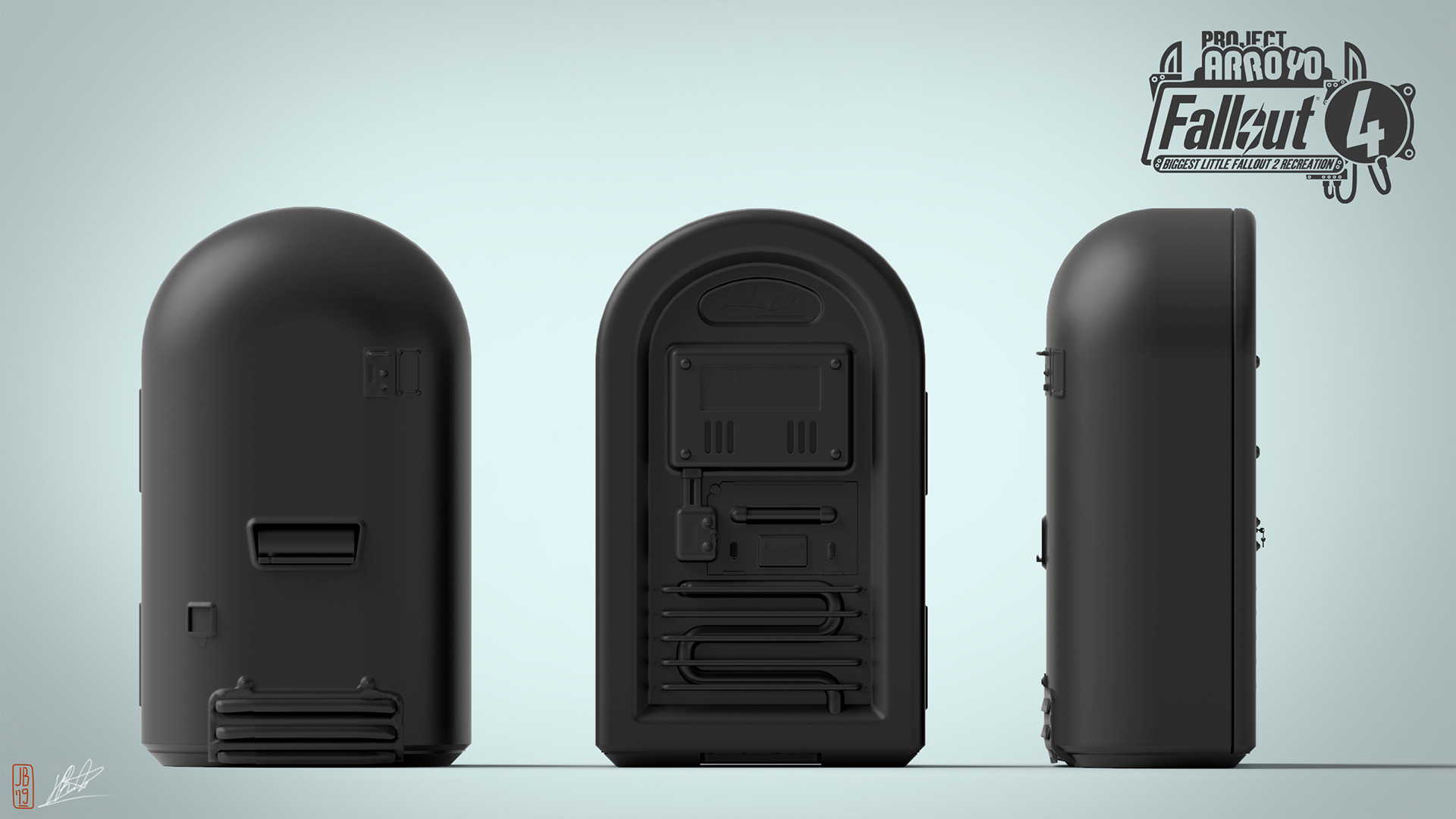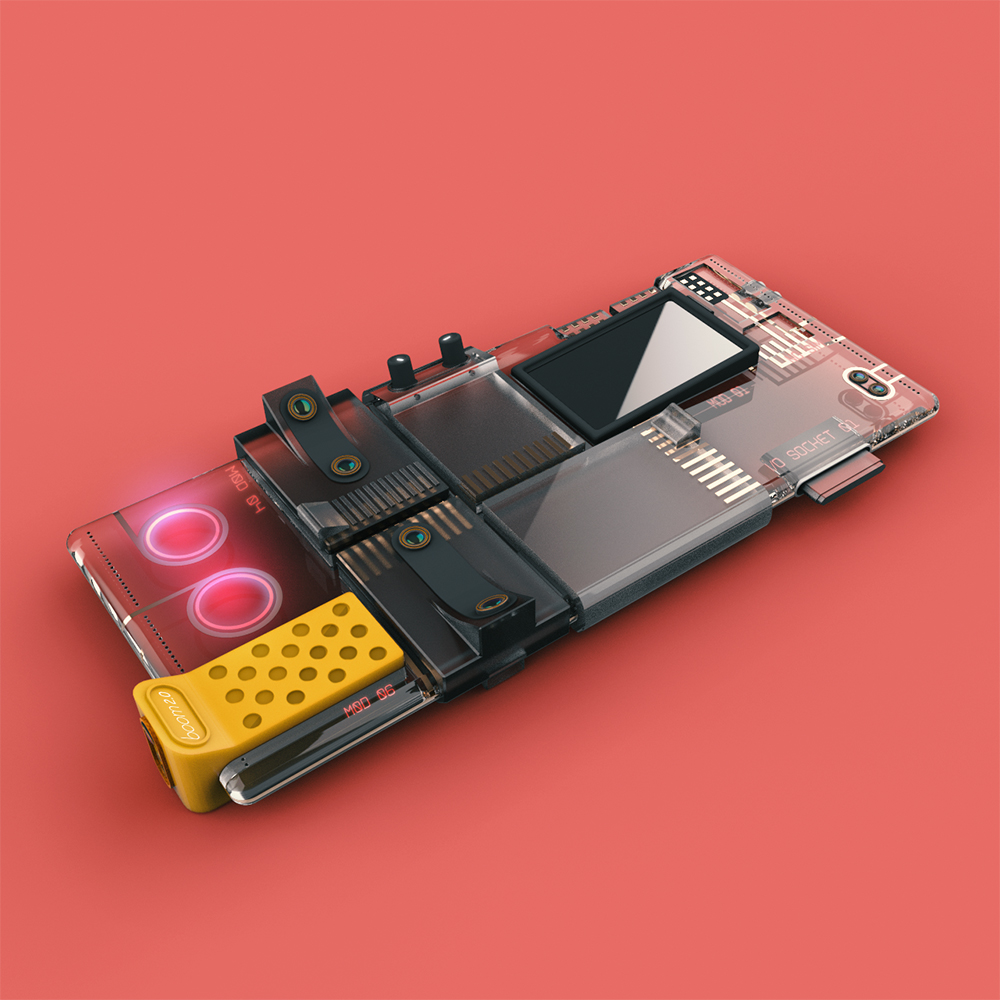João de Brito is a multi-disciplinary designer who started as an Industrial Designer and is now pursuing a career as a Concept Artist. His range of knowledge and talent is evident in his work with KeyShot as his choice for its flexibility and consistent workflow. Here he tells us more about his background and why KeyShot is so important to his process.
João de Brito
What sparked your interest in Industrial Design?
It’s been a strange ride. I was always interested in drawing and painting since I can remember; most of my childhood and early teens were split between that and gaming. In high school, my parents enrolled me in a science and tech-oriented program, which was highly advised due to its employability over, say, holding a brush. I spent most days drawing during classes and drowning in homework. Any free time I had was spent learning 3D modeling, as I was quite fascinated with speed-modeling videos and it related to my other interests.
For college, expectations were higher than ever. Along with that, I had no idea what to do with the last three years of lessons. I picked the first thing I found closest to a program with 3D modeling and, incredibly, that was Industrial Design. I didn’t even know what I was getting myself into, to be honest, but as soon as I picked it up, my creativity exploded in all directions and I felt like never before.
I was caught up in the process of identifying and solving creative problems. There was sketching, modeling, and rendering. And in those years leading up to graduation, I became increasingly engrossed in this universe that I never knew existed during high school (apparently those educating us didn’t think it worth mentioning).
What led you to become a Concept Artist?
Although I was doing well for myself and thought I had found my calling, most of my projects focused on futurism and sci-fi themes, and I felt unsatisfied and off-course. I graduated and worked a couple of jobs, volunteered, started freelancing and enrolled in a Double Master’s program at the Royal College of Art and Imperial College London to further my career as a Designer. Everyone’s expectations around me were met the day and I said to myself, ‘Well this is it. Everyone’s happy and I guess I got in.’ Fast forward to the end of the first term and I surprised everyone but myself by dropping out, with quite a lengthy explanation of what a ‘Concept Artist’ is and why it was a real job that paid the bills. It’s been a rocky road from there, but I’m quite happy that it’s sort of come full circle and I get to focus on this path instead.
What was the turning point in your career?
During my BA, I was commended in a few projects and made the local news for an Electrolux design contest submission. I’ve created and sold a successful virtual reality product (the VRGM). My passion for being a concept artist is immense though and I’m striving to put freelancing aside and find a full-time job in the industry.
What is unique about your approach to a project?
I’m in a unique position to approach projects given my background. I can apply principles particular to Industrial Design such as design thinking exercises, user-centric approaches, and find direct design-oriented solutions, particularly when it comes to designing props, objects, machines, and structures. I can then combine that with visual development techniques used by concept artists to get the best out of both worlds with a great arsenal of tools to work with. It’s been done before by other designers who transitioned into concept artists, but it’s definitely a unique approach by its merit.
What is your primary 3D modeling software?
Blender was my first 3D modeling software. I’ve used it since it was an unintelligible mess and tutorials were scarce. Since then I’ve used Rhinoceros, Fusion360, 3D Coat, amongst others. Nowadays, I utilize a mix of Blender and ZBrush with a little bit of Fusion 360. It’s hard to pick a favorite but for Concept Art specifically – ZBrush is an excellent tool to play around with, sculpt and generate solid ideas quickly, making it an unmatched creative outlet.
Fusion 360 is excellent and at this point indispensable for anything that’s mechanical or can be categorized as hard surface design, not only due to its CAD workflow which I am accustomed to but also for its ability to render NURBS in KeyShot. Last but not least, Blender is a great tie-in. It can do everything the last two can and it’s excellent for quickly iterating shapes and details. Plus, it’s a great platform to get some parts of the project done faster and bring every component of the model together. Blender has matured immensely over the last few years and if not for their null barrier of entry, I would never have been able to afford 3D modeling software as a kid and be where I am today.
Where in the process do you use KeyShot?
KeyShot is vital to me both to check how a project looks during its visual development stage and, of course, to render everything after the 3D modeling phase. Using KeyShot early on projects has such an impact in determining mood, lighting, and color choices. It has even once or twice completely flipped the theme of the project into something completely different, which in these cases produced results I would never have gotten otherwise.
What makes KeyShot an important tool to have?
While there are a plethora of tools for Concept Artists, I have to vouch for KeyShot from a workflow perspective. A concept artist faces constant pressure from deadlines and therefore looks for tools that can do the most in the least amount of time, often switching between software a lot. KeyShot is my top choice and gives me exactly what I ask of it without slowing me down — as a concept artist that’s all I need from it as a tool.
There are five ways KeyShot offers a consistent workflow:
- It’s easy to pick up and has a high skill ceiling with more options and fewer headaches than other rendering software.
- It allows quick iteration of different materials and lighting conditions with the library and material graph.
- It provides all the necessary capabilities when integrating it within a design workflow.
- It holds multiple materials, cameras, and lighting conditions in a single scene with no hassle.
- It queues up all the variations and provides the render passes needed to composite and adjust.
What advice would you give to someone interested in doing what you do?
If you’re certain you have a calling, don’t waste any time in working toward success in that calling, despite what the circumstances tell you, even if you don’t know exactly where you’ll land when you take that leap. Disappoint often and make productive mistakes. To meet that goal, make sure to self-evaluate often, know where you want to be, don’t take shortcuts on the path to mastery, and take advantage of every resource available to you. We have an incredible amount of shared knowledge out there which wasn’t available just a decade ago. You have the world at your fingertips — make the most out of it!






















